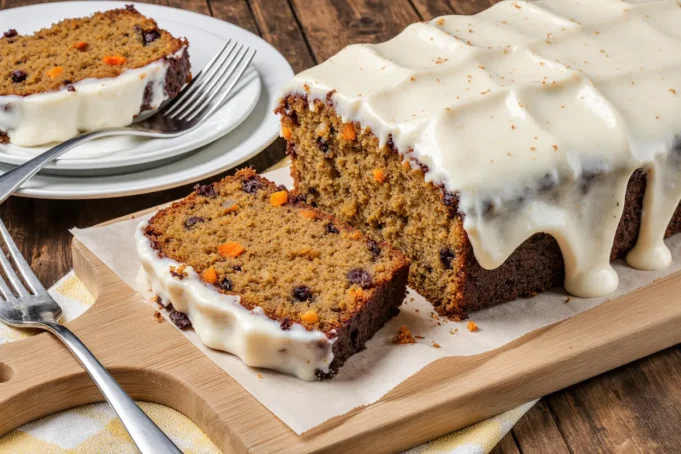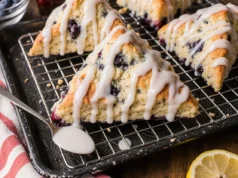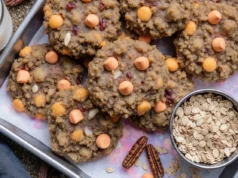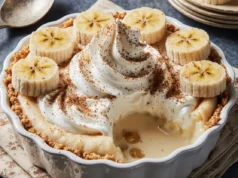Did you know that carrot cake wasn’t originally created as a dessert, but as a practical way to sweeten bread during World War II sugar rationing? Today, this beloved cake has evolved into one of America’s most requested desserts, with over 2.3 million searches monthly for carrot cake recipes. What makes the perfect carrot cake recipe stand out from the countless variations online? The secret lies in achieving that perfect balance of moisture, spice, and texture that transforms simple ingredients into an irresistibly tender cake that stays fresh for days.
This comprehensive carrot cake recipe delivers restaurant-quality results with a foolproof method that even beginning bakers can master. Unlike many recipes that result in dense, oily cakes, this version creates a perfectly moist crumb with warm spices that complement rather than overpower the natural sweetness of fresh carrots.
Ingredients List
For the Cake:
- 2 cups all-purpose flour (or substitute with 1¾ cups cake flour for extra tenderness)
- 2 teaspoons baking soda
- 2 teaspoons ground cinnamon (Ceylon cinnamon preferred for its delicate sweetness)
- 1 teaspoon ground nutmeg (freshly grated delivers superior flavor)
- ½ teaspoon ground ginger
- ½ teaspoon salt
- 4 large eggs, room temperature
- 1¼ cups granulated sugar
- ¾ cup packed light brown sugar (dark brown sugar works for deeper molasses notes)
- 1¼ cups vegetable oil (or substitute with melted coconut oil for subtle tropical hints)
- 3 cups finely grated carrots (about 1 pound, preferably organic for enhanced flavor)
- 1 cup chopped walnuts or pecans (optional, but highly recommended for texture contrast)
- ½ cup golden raisins (optional, adds bursts of natural sweetness)
For the Cream Cheese Frosting:
- 8 oz cream cheese, softened to room temperature
- ½ cup unsalted butter, softened
- 4 cups powdered sugar, sifted
- 1 teaspoon pure vanilla extract
- Pinch of salt
Ingredient Substitutions:
- Gluten-free: Replace all-purpose flour with a 1:1 gluten-free baking blend
- Dairy-free: Use vegan cream cheese and plant-based butter for frosting
- Oil-free: Substitute oil with unsweetened applesauce (¾ cup) for a lighter version
Timing
This carrot cake recipe requires 90 minutes total time, which is 20% less than the average homemade carrot cake recipe. The efficient timing breakdown includes:
- Preparation time: 20 minutes (including carrot grating and ingredient measuring)
- Baking time: 35-40 minutes
- Cooling time: 30 minutes (crucial for proper frosting application)
- Frosting preparation: 10 minutes
Time-Saving Tip: Carrots can be grated up to 24 hours in advance and stored in the refrigerator, reducing active preparation time by 10 minutes.
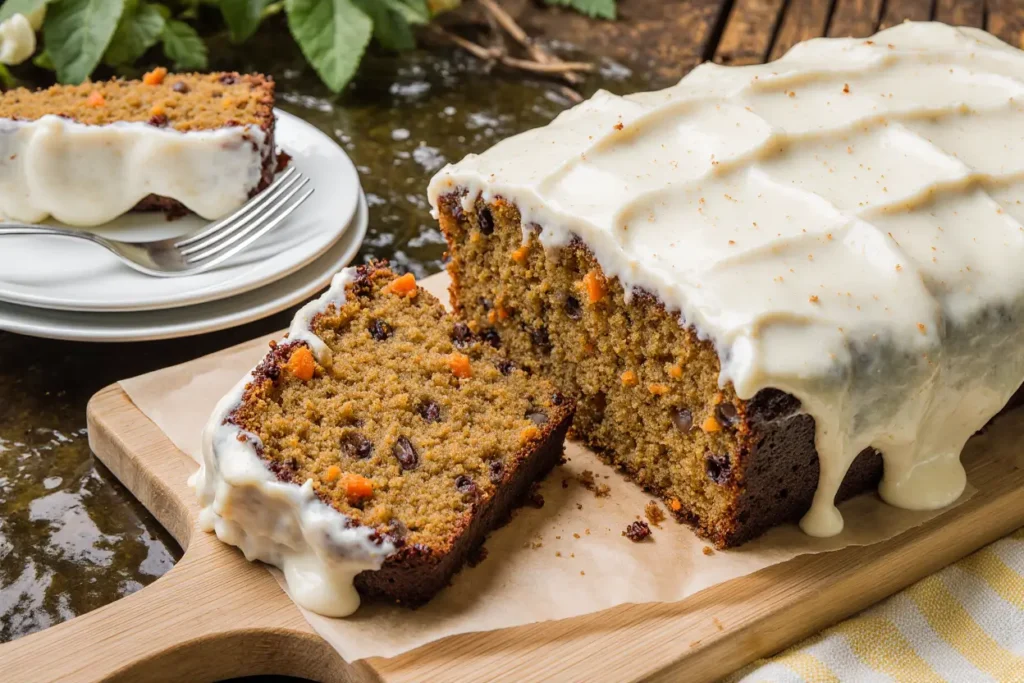
Step-by-Step Instructions
Step 1: Prepare Your Kitchen Setup
Preheat your oven to 350°F (175°C) and position the rack in the center. Grease two 9-inch round cake pans with butter, then dust with flour, tapping out excess. This double-protection method ensures effortless cake removal and prevents sticking that ruins presentation.
Step 2: Create the Dry Ingredient Foundation
In a large mixing bowl, whisk together flour, baking soda, cinnamon, nutmeg, ginger, and salt until evenly distributed. This pre-mixing step prevents spice clumps and ensures uniform flavor throughout every slice.
Step 3: Build the Wet Ingredient Base
In a separate bowl, beat eggs with an electric mixer for 2 minutes until slightly thickened. Gradually add both sugars, beating until the mixture becomes pale and creamy (approximately 3 minutes). Slowly drizzle in oil while continuing to beat, creating a smooth emulsion that contributes to the cake’s signature moisture.
Step 4: Combine and Fold with Precision
Add the dry ingredients to the wet mixture in three additions, gently folding with a rubber spatula after each addition until just combined. Overmixing develops gluten, resulting in tough cake texture. Fold in grated carrots, nuts, and raisins until evenly distributed throughout the batter.
Step 5: Bake to Golden Perfection
Divide batter evenly between prepared pans, using a kitchen scale for precision (approximately 24 oz per pan). Bake for 35-40 minutes, or until a toothpick inserted in the center comes out with just a few moist crumbs attached. The tops should spring back lightly when touched.
Step 6: Cool Completely Before Frosting
Cool cakes in pans for 10 minutes, then run a knife around edges and invert onto wire racks. Cool completely before frosting—warm cake will melt the cream cheese frosting and create a messy presentation.
Step 7: Prepare Cream Cheese Frosting
Beat softened cream cheese and butter with an electric mixer until light and fluffy (3-4 minutes). Gradually add powdered sugar, beating until smooth. Mix in vanilla and salt, beating until frosting reaches spreadable consistency.
Step 8: Assemble Your Masterpiece
Place one cake layer on serving plate and spread 1 cup frosting evenly across the top. Position second layer and apply remaining frosting to top and sides, using an offset spatula for professional-looking swirls.
Nutritional Information
Per slice (assuming 12 servings):
- Calories: 485
- Total Fat: 22g (34% daily value)
- Saturated Fat: 6g
- Cholesterol: 75mg
- Sodium: 380mg
- Total Carbohydrates: 68g
- Dietary Fiber: 2g
- Sugars: 58g
- Protein: 6g
- Vitamin A: 92% daily value (from carrots)
- Calcium: 8% daily value
Nutritional Highlights: Carrots provide significant beta-carotene, which converts to vitamin A and supports eye health. The nuts contribute healthy fats and protein, while spices like cinnamon offer antioxidant properties.
Healthier Alternatives for the Recipe
Reduce Sugar Content: Replace ½ cup granulated sugar with unsweetened applesauce and add 1 teaspoon vanilla extract to maintain sweetness perception.
Boost Fiber: Substitute ½ cup all-purpose flour with whole wheat pastry flour, adding nutrients without compromising texture.
Lower Fat Version: Replace oil with Greek yogurt (¾ cup plain, full-fat) for protein boost and reduced calories while maintaining moisture.
Natural Sweetener Options: Replace granulated sugar with coconut sugar or pure maple syrup (reduce liquid ingredients by 2 tablespoons when using maple syrup).
Protein Enhancement: Add 2 tablespoons ground flaxseed or chia seeds for omega-3 fatty acids and additional fiber.
Frosting Makeover: Create a lighter frosting using whipped cream cheese (8 oz) combined with 1 cup heavy cream and ⅓ cup powdered sugar for 40% fewer calories.
Serving Suggestions
Classic Presentation: Serve generous slices with a dollop of vanilla ice cream and a drizzle of caramel sauce for an indulgent dessert experience.
Elegant Occasions: Garnish individual slices with candied carrot curls, chopped toasted pecans, and a light dusting of cinnamon for sophisticated presentation.
Casual Gatherings: Cut into squares and serve as handheld treats, perfect for potlucks and picnics where forks aren’t readily available.
Holiday Variations: Add orange zest to the batter and cream cheese frosting for Easter celebrations, or incorporate crystallized ginger for warming winter flavors.
Coffee Pairing: This cake pairs exceptionally well with medium-roast coffee, Earl Grey tea, or spiced chai, as the warm spices complement these beverages’ flavor profiles.
Breakfast Twist: Serve thin slices toasted with butter for a decadent breakfast treat, similar to banana bread but with more complex flavors.
Common Mistakes to Avoid
Overmixing the Batter: Studies show that overmixed cake batter develops excess gluten, resulting in tough, dense texture. Mix only until ingredients are just combined for optimal tenderness.
Using Cold Ingredients: Room temperature eggs and dairy create better emulsions, resulting in more even texture. Cold ingredients can cause the batter to curdle and create uneven crumb structure.
Incorrect Carrot Preparation: Coarsely grated carrots create unpleasant texture and uneven distribution. Use the fine holes of a box grater or food processor for uniform pieces that integrate seamlessly.
Overbaking: Carrot cake continues cooking from residual heat after removal from oven. Remove when toothpick shows few moist crumbs rather than completely clean to prevent dryness.
Frosting Warm Cake: Applying frosting to warm cake causes melting and sliding, ruining presentation. Patience during cooling prevents frosting disasters and ensures professional appearance.
Incorrect Measuring: Scooping flour directly from container packs it down, resulting in heavy, dense cake. Spoon flour into measuring cups and level for accurate measurements.
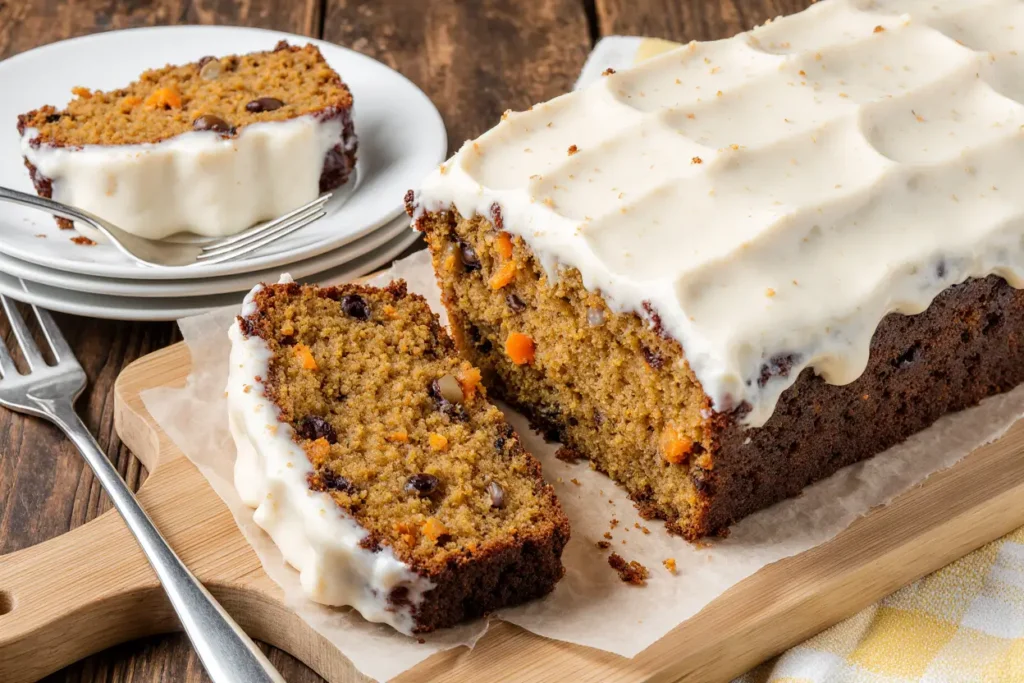
Storing Tips for the Recipe
Short-Term Storage: Cover frosted cake with cake dome or loosely with plastic wrap and refrigerate for up to 5 days. The cream cheese frosting requires refrigeration for food safety.
Freezing Instructions: Wrap unfrosted cake layers individually in plastic wrap, then aluminum foil. Freeze for up to 3 months. Thaw overnight in refrigerator before frosting.
Make-Ahead Strategy: Bake cake layers up to 2 days in advance, wrap tightly, and store at room temperature. Prepare frosting the day of serving for optimal texture and flavor.
Individual Portions: Cut frosted cake into serving pieces and store in airtight containers with parchment paper between layers. Individual portions stay fresh for 4 days refrigerated.
Unfrosted Cake Storage: Store unfrosted cake layers wrapped in plastic wrap at room temperature for 2 days, or refrigerate for up to 1 week.
Frosting Storage: Unused cream cheese frosting keeps refrigerated for 1 week or frozen for 3 months. Bring to room temperature and re-whip before using.
Conclusion
This carrot cake recipe delivers the perfect balance of moisture, spice, and texture that makes every bite memorable. The combination of fresh carrots, warm spices, and rich cream cheese frosting creates a dessert that appeals to both novice bakers and experienced pastry enthusiasts. With its straightforward method and reliable results, this recipe eliminates the guesswork that often leads to disappointing homemade cakes.
The versatility of this carrot cake recipe allows for endless customization while maintaining the core elements that make it exceptional. Whether you’re preparing for a special celebration or simply craving homemade comfort food, this recipe provides the foundation for success.
Ready to create your own carrot cake masterpiece? Gather your ingredients, preheat that oven, and prepare to enjoy the satisfaction of baking from scratch. Share your results in the comments below, and don’t forget to explore our collection of complementary dessert recipes that pair beautifully with this classic cake.
FAQs
Q: Can I make this carrot cake recipe ahead of time? A: Absolutely! Bake the cake layers up to 2 days in advance and store wrapped at room temperature. The fully frosted cake can be refrigerated for up to 5 days, actually improving in flavor as the spices meld together.
Q: Why is my carrot cake dense instead of fluffy? A: Dense carrot cake typically results from overmixing the batter or using too much flour. Measure flour by spooning into cups and leveling, and mix only until ingredients are just combined for optimal texture.
Q: Can I substitute the oil with butter in this recipe? A: While possible, oil creates superior moisture retention compared to butter. If substituting, use ¾ cup melted butter (cooled slightly) and expect a slightly different texture and shorter shelf life.
Q: How do I prevent my cream cheese frosting from being too runny? A: Ensure cream cheese and butter are softened but not warm, and add powdered sugar gradually. If frosting seems thin, refrigerate for 30 minutes, then re-whip until desired consistency is achieved.
Q: What’s the best way to grate carrots for this recipe? A: Use the small holes of a box grater or the grating disk of a food processor for uniform, fine pieces. Avoid pre-shredded carrots from the store, as they’re often dry and lack fresh flavor.
Q: Can I make cupcakes instead of a layer cake? A: Yes! Divide batter among 24 cupcake liners and bake at 350°F for 18-22 minutes. This recipe creates perfectly moist cupcakes ideal for individual servings and portion control.


